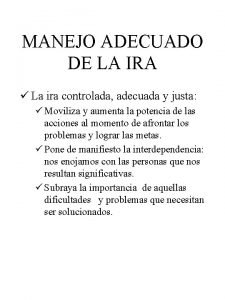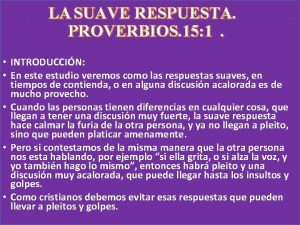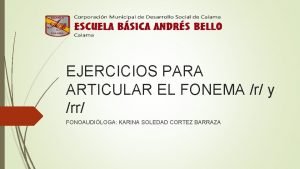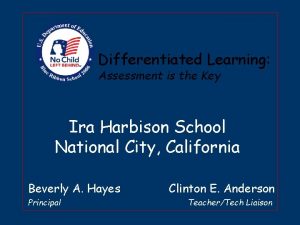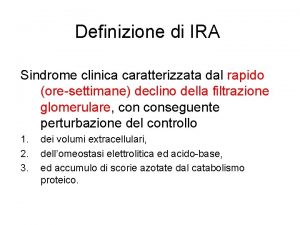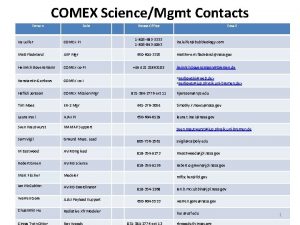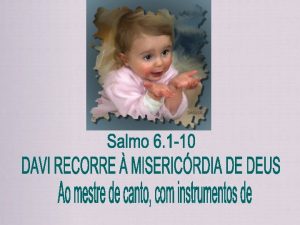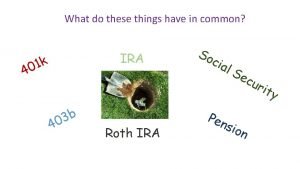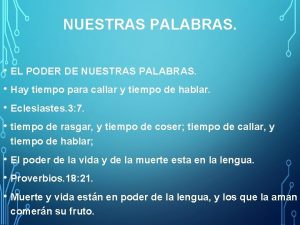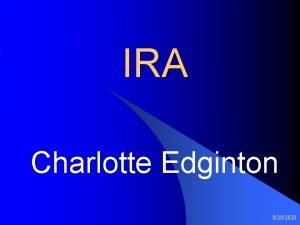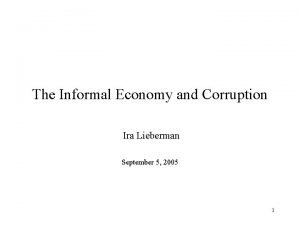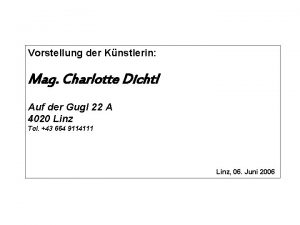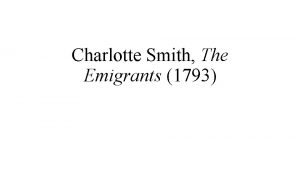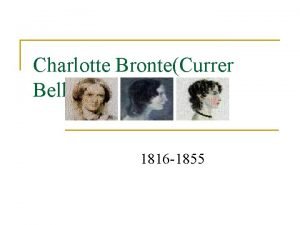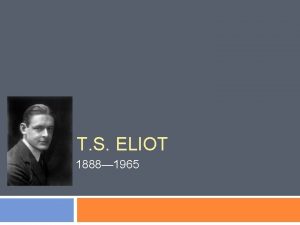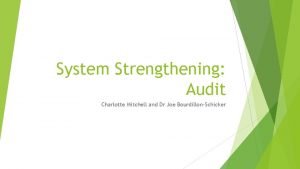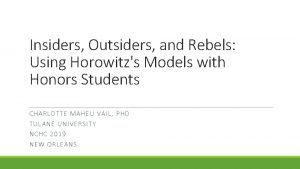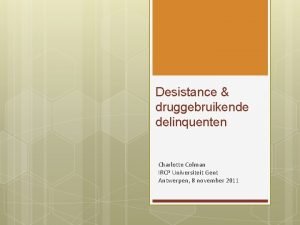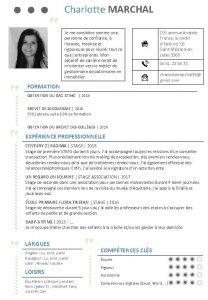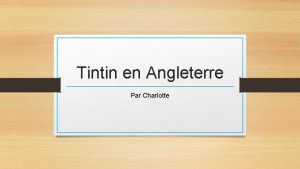IRA Charlotte Edginton 9292020 Introduction l l l



























































































































- Slides: 123

IRA Charlotte Edginton 9/29/2020

Introduction l l l l l What is a traditional IRA? How much can be contributed? How much can I deduct? Can I rollover retirement plan assets? Are distributions taxable? What are prohibited transactions? What is a Roth IRA? Can I rollover amounts into a Roth IRA? Are distributions from a Roth IRA taxable? What is the premature distribution penalty? 9/29/2020

Agenda l l l l l IRA requirements IRA contributions IRA deductions IRA rollovers Prohibited transactions Roth IRA requirements Roth IRA rollovers Roth IRA distributions Premature distribution penalty 9/29/2020

Objectives l l l Identify the requirements for an IRA. Determine and calculate the proper IRA contribution. Determine and calculate the correct IRA deduction. 9/29/2020

Definition of IRA A savings program that allows an individual to set aside money for retirement. TYPES OF IRA 1. 2. 3. 4. 5. 6. Traditional Individual Retirement Account Individual Retirement Annuity Employer and Employee Association Trust Account Roth IRA Simplified Employee Pension (SEP) Savings incentive match plans for employees (SIMPLE) 9/29/2020

Individual Retirement Annuity Requirements 1. 2. 3. 4. 5. Annuity contract or endowment contract issued by an insurance company. Contract non-transferable by the owner. Nonrefundable premiums, not fixed and not in excess of $5, 500 Entire interest distributable to the owner. Entire interest nonforfeitable. 9/29/2020

Individual Retirement Account Requirements 1. 2. 3. 4. A trust or custodial account. Limited annual contributions of up to $5, 500 , $6500 if age 50 or older. Trustee is a bank or other qualified institution. Trust funds may not be invested in life insurance contracts. 9/29/2020

Individual Retirement Account Requirements cont. 5. 6. 7. 8. Account assets nonforfeitable. No commingling of funds by trustee. Distributions required by April 1 of the year following the year in which you reach age 701/2. Can’t set up IRA if you reach age 70 ½. 9/29/2020

Example 1 Taxpayer wages = $40, 000 l Age = 30 l What is the maximum IRA contribution? l Computation: Lesser of $5, 500 or 100% of compensation=$40, 000 l Answer: $5, 500 9/29/2020

Example 2 Taxpayer wages = $1, 000 l What is the maximum IRA contribution? l Lesser of $5, 500 or 100% of compensation=$1, 000 l Answer: $1, 000 9/29/2020

Example 3 Taxpayer age = 53; wages = $45, 000 l Limit for Age > 50 = $6, 500 l What is the maximum IRA contribution? l Computation: Lesser of $6, 500 (TP older than 50) or 100% Compensation (45, 000) l Answer: $6, 500 9/29/2020

Contribution limits for other Plans l 401 k Plans limit is $18, 000 or 24, 000 if 50 years or older l 415(c) plans the limit is the lesser of $54, 000 or 100% of includible compensation ( age 50 or older an additional $6, 000) 9/29/2020

Definition of Compensation Inclusions Exclusions l l l l Salaries Commissions Bonuses Tips Professional Fees Amounts paid for professional services Taxable alimony Separate maintenance payments l l Interest Dividends Earnings or profits from property, deferred compensation, pensions, or annuities Self employment loss 9/29/2020

Example 4 l Taxpayer, under 50; income = Wages $2, 000 Bonuses $ 500 Tips $ 300 Interest $ 100 l What is the amount of Compensation? Answer: $2, 800 9/29/2020

Example 4 (Cont. ) l l What is the maximum IRA Contribution? Computation: Lesser of $5, 500 or 100% Compensation=$2, 800 Answer: $2, 800 9/29/2020

Self-Employment Definition of Compensation Gross Income l Minus Expenses l Minus ½ Self Employment Tax l Minus Pension Contribution = Self Employment IRA Compensation l 9/29/2020

Example 5 What is the amount of SE compensation? l Taxpayer age 50; l Gross Income $100, 000 l Expenses 60, 000 l ½ Self Employment Tax 4, 258 l Pension Contribution 6, 500 l 9/29/2020

Example 5 cont. Answer: $100, 000 Gross Inc. - 60, 000 Expenses - 4, 258 = ½ SE Tax - 6, 500 IRA Contribution = $29, 242 SE Compensation. l 9/29/2020

Example 5 (Continued) What is the Maximum IRA Contribution? l Computation: Lesser of l $6, 500 or 100% of Compensation = $29, 242 Answer: $6, 500 (Taxpayer age 50) 9/29/2020

Spousal IRA Formula: Lesser of A. or B. A. IRA Limit: $5, 500 (6500 if age 50 or older) B. Your Compensation plus Spousal Compensation minus IRA and Roth IRA Deductions 9/29/2020

Example 6 The taxpayer is married and his wife earns $1, 000 part time. l The husband earns $40, 000. l He contributed $2, 000 to his own IRA and $1, 000 to a Roth IRA. l What is the Maximum IRA Comp. for the wife? l 9/29/2020

Example 6 cont. Husband: $40, 000 Wages -3, 000 Contrib. $37, 000 Comp. l Wife: $ 1, 000 Wages + $ 37, 000 Husband Comp. = $38, 000 Wife’s Comp. l 9/29/2020

Example 6 cont. What is the maximum IRA contribution for the wife? l Computation: Lesser of $5, 500 or 100% of Compensation = $38, 000 l Answer: $5, 500 9/29/2020

Shareholder Status Usually IRAs and Roth IRAs are not allowed as S corporation shareholders. l If an IRA or Roth IRA held stock in a bank after October 22, 2004 the owner of the plan is considered a shareholder. Retention of the stock is permitted. l In some cases sale of the bank stock to the beneficiary of the trust is allowable. l 9/29/2020

Inherited IRA’s If the spouse inherits the IRA she/he can make contributions, rollover and deduct contributions. l Individuals other than the spouse who inherit an IRA are not allowed to treat it as if they owned it. l 9/29/2020

Inherited IRA Can deduct contrib. l made to an inherited l Ira only if inherited l IRA is from the spouse. l 9/29/2020

Time to Answer Questions Divide into groups And answer questions. l Group 1 Q. 1. P. 267 Group 2 Q. 2. P. 267 Group 3 Q. 3. . P. 267 Group 4 Q. 4. P 268

Time to Answer Questions Divide into groups And answer questions. l Group 1 Q. 5. P. 268 Group 2 Q. 6. P. 268 Group 3 Q. 7. P. 268 Group 4 Q. 8. P 269 9/29/2020

How Much Can I Deduct? Cannot deduct more than contributed l Deduction reduced if an IRA contributor is covered by an employer-sponsored Plan l Deduction reduced or eliminated if IRA contributors exceed modified AGI l 9/29/2020

Active Participant Any individual who is a participant in any of the following employer-maintained plans: 1. Qualified pension, D/C or D/B 2. Qualified annuity plan. 3. A plan established for its employees by the United States or by a state. 4. A tax-sheltered annuity 5. SEP 6. IRC section 501(c) (18) trust l 9/29/2020

IRA Deduction Limit for Active Participant in Employer Plan Filing Status Compensation Level Married filing joint Single $99, 000 - 119, 000 Married filing Separately $0 - $10, 000 $62, 000 - 72, 000 9/29/2020

Who must apply the reduction? The taxpayer who is covered by the employer sponsored plan but the taxpayer’s spouse who is not covered may take the full deduction. l However, if AGI exceeds $186, 000 but less than $196 , 000. The deduction is reduced for the spouse who is not covered by an employer sponsored plan. l 9/29/2020

AGI LIMITS FOR IRA DEDUCTIBLE CONTRIBUTIONS Married Jointly Filer Single Filer $40, 000 -$50, 000 $25, 000 -$35, 000 1998 1999 $50, 000 -$60, 000 $30, 000 -$40, 000 $51, 000 -$61, 000 $31, 000 -$41, 000 2000 2001 $52, 000 -$62, 000 $32, 000 -$42, 000 $53, 000 -$63, 000 $33, 000 -$43, 000 2002 2003 $54, 000 -$64, 000 $34, 000 -$44, 000 $60, 000 -$70, 000 $40, 000 -$50, 000 2004 2005 $65, 000 -$75, 000 $45, 000 -$55, 000 $70, 000 -$80, 000 $50, 000 -$60, 000 2006 $75, 000 -$85, 000 2007 $80, 000 -$100, 000 $50, 000 -$60, 000 Tax Year 1997 9/29/2020

Definition of Modified Adjusted Gross Income AGI now includes the following: IRA Deduction Student loan interest deduction Foreign earned income exclusion Foreign housing exclusion Exclusion of qualified saving bond interest Exclusion of employer-paid adoption expense 9/29/2020

Deductible Contribution Formula Modified AGI-App. Min. Phaseout Amt. l Max. phaseout amt. -min. phaseout amt. l X 5, 500 l The denominator for MFJ will always be $20, 000 (119, 000 -99, 000) l Single and MFS will be 10, 000 (62, 00072, 000) and (0 -10, 000) l 9/29/2020

Example 7 Facts Husband Wife file a joint return. l Husband covered by an employersponsored plan l Wages: Husband $82, 000, Wife $20, 000 l Total Wages $102, 000 l Contribution: Husband $5, 500, Wife $5, 500 l 9/29/2020

Example 7 cont. l Computation of fraction for MFJ: $99, 000 Min. -102, 000 AGI =$3, 000 Max phase out amt. 118, 000 -Min. Amt. 98, 000= 20, 000 Fraction is 3, 000 = 15% 20, 000 9/29/2020

Example (Cont. ) $5, 500 x 15% = $825 deduction not allowable for husband 825 -5, 500 =4, 675 must be rounded to the nearest ten. Result is 4, 680 deductible by the husband. 9/29/2020

Example (Cont. ) *Note it is easier to subtract the maximum amt. as follows: AGI 102, 000 -$119, 000 = 17, 000 = 85% X 5, 500 = 4, 675 20, 000 The result must be rounded to the nearest ten. Result is 4, 680 deductible out of 5, 500 contributed. 9/29/2020

Example continued Total Deductions: Husband $4, 680 l Wife $5, 500 10, 180 Deduction on Joint l Return l

Example 7 cont. l Contribution not allowed to deduct by Husband. $5, 500 Contribution 4, 680 Deductible Contribution $820 Nondeductible Contrib. for husband l Report nondeductible contribution on Form 8606 9/29/2020

Things to Remember on Computation of Allowable Amount 1. Always round up to next highest multiple of 10 for allowable deduction. l 2. If deduction is allowed $200 or more is allowed. l 3. The deduction cannot exceed the contribution made. l 9/29/2020

Form 8606 l Should be filed every year to report nondeductible contributions. If you fail to file the form the presumption is that all contributions were deducted and this means when you receive the payments at retirement, it is all taxable!!! 9/29/2020

Second Limitation Applies if taxpayer is actively participating in employer-sponsored plan l Must file Joint Return l AGI limitation $186, 000 to $196, 000 l 9/29/2020

Example 8 Facts l l l Wages: Wife $100, 000, Husband $89, 000 Joint Return Wife active participant in employer-sponsored plan 9/29/2020

Example 8 cont. Computation: 186, 000 min. -AGI $189, 000 limitation = $3, 000/10, 000=30% $5, 500 x 30% = $1, 650 -5500=3, 850 l Answer: Wife 0 Husband $3, 850 Total Deduction $3, 850 Joint Return l 9/29/2020

Rollovers 9/29/2020

Prohibited Transactions A prohibited transaction is any improper use of your IRA account. Examples: Sell personal property to IRA Invests in collectibles (but can hold gold, silver coins/billion 9/29/2020

Prohibited Transactions cont. Using the IRA as security for a loan. l Buying property for personal use (present or future) with IRA funds. l 9/29/2020

Roth IRA Objectives l l l Determine and calculate the proper Roth IRA contribution. Determine allowable rollovers and conversions. Determine and calculate the proper Roth IRA distribution. 9/29/2020

ROTH IRA Contribution Limits: 1. Lesser of l $5, 500 or 6, 500 if age 50 or older or 100% of Compensation 2. Reduction of contribution due to phase out rule: 9/29/2020

Example 9 Roth IRA Facts Single taxpayer. l Earns $45, 000 a year l Contributes $500 to a traditional IRA l What is the maximum that the taxpayer can contribute to the Roth IRA? l 9/29/2020

Example 9 cont. Computation: Lesser of $5, 500 - 500 Trad. IRA Contrib. $5, 000 or 100% of Compensation $45, 000 l Answer: $5, 000 Maximum Contribution 9/29/2020

Roth IRA Phase Out Rule Filing Status AGI Married Joint $186, 000 -196, 000 Married Separate $ 0 - 10, 000 Single $ 118, 000 -133, 000 9/29/2020

Example 10 Roth IRA Facts Joint return AGI = $188 , 000: Taxpayers do not have a traditional IRA. Wife has a Roth IRA. l What is the maximum contribution that she can make to her Roth IRA? 9/29/2020

Example 10 cont. l Computation: $186, 000 Beg. Lim. -AGI $188, 000 = $2, 000 2, 000/10, 000= 20% 5, 500 x 20% = $1, 100 Not allowable $5500 – 1, 100 = $4, 400 Allowable Answer: $4, 400 Maximum Contribution Note: computation is similar to Traditional IRA computation but for different purposes. l 9/29/2020

Roth IRA Deductions No Roth IRA Deductions on the individual income tax return, Form 1040 9/29/2020

Rollovers/Conversions 9/29/2020

Participant Loans Must be allowed in the plan and meet the requirements of IRC 72 P. l The requirements are that the amount of the loan cannot exceed the lesser of l A. $50, 000 or l B. greater of ½ of participant’s present vested value or accrued benefit or $10, 000 l Paid back within 5 years unless for principal residence. l

Participant Loans Payment must be not less than quarterly. l Must bear a reasonable rate of interest l A pledge of the participant’s interest in the plan to provide security for the loan. l

Conversions Conversion must be within 60 days from date of distribution. l Substantially equal periodic payments qualify. l 1998 Traditional IRA to Roth conversion: 4 -year averaging allowed. l Failed Conversions: subject to 6% excess contrib. , income inclusion & 10% penalty. l 9/29/2020

Conversions cont. Causes of failed conversions: AGI over 100, 000 or married filing separate Avoid adverse consequences - by due date of return including extensions: recharacterized or remove amount and earnings, converting into traditional IRA 9/29/2020

Conversions cont. Recharacterization: treating contribution made to one type of IRA as having been made to a different type of IRA. l Recharacterization: allowable if completed by due date of return including extensions. l Must be trustee to trustee transfer. l 9/29/2020

Nontaxable Roth IRA Distribution l l No tax on the earnings No tax on distributions No premature distribution penalty. Distribution must occur after the five tax year period beginning with the year of which the contribution relates, not the year the contribution is actually made. 9/29/2020

Non Taxable Roth IRA Distributions cont. l Distribution must be for 1 of these 4 reasons: l Age 59 ½ l Death l Disability l Special purpose - first time home buyer. 9/29/2020

Non Qualified Distributions The amount contributed to the Roth IRA is not taxable in the year distributed unless cumulative distributions exceed cumulative contributions. l Non-qualified distributions are taxed on the earnings. l 10% premature distribution excise tax applies unless exceptions are met. l 9/29/2020

Example 11 Conversion The taxpayer converted a traditional IRA to a Roth IRA. l Total amount in traditional IRA was $80, 000 with a basis of $20, 000. l The taxpayer selected the 4 year averaging method to report the gain on conversion which is $80, 000 - 20, 000 divided by 4 = $15, 000 per year 1998 2001. l 9/29/2020

Example 11 cont. Conversion In 2003 the taxpayer made a regular contribution of $5500. l In 2003 the taxpayer received a distribution from the Roth IRA in the amount of $5, 500. l What is the taxable amount of the nonqualified distribution? l 9/29/2020

Example 11 Continued Conversion Step 1: divide the distribution into categories to determine the order of taxability. l Set order for distributions: 1. Regular contributions. 2. Conversion contributions - FIFO a. taxable portion b. nontaxable portion 3. Earnings on contributions l 9/29/2020

Example 11 cont. Conversion Order rules in our example for $5, 000 distribution in 2003: l Regular Contributions $3, 000 l Conversions $2, 000 9/29/2020

Example 11 cont. Conversion 2003 Taxability of nonqualified distribution: Last conversion payment $15, 000 $5, 000 distribution - 0 Premature Distribution Penalty $2, 000 = 10% of $2, 000 conversion amt. l 9/29/2020

Premature Distribution Penalty l l l 10% additional tax on early distributions Applicable to traditional IRAs and nonqualified distributions from Roth IRAs. Report on Form 5329. 9/29/2020

Premature Distribution Penalty Exceptions 1. Death, Disability Annuity based on life expectance which must continue for at least 5 years. 2. Medical expenses exceeding 7. 5% of AGI. 3. Qualified higher education expenses 9/29/2020

Premature Distribution Penalty Exceptions cont. 4. Qualified higher education expenses 5. Unemployed health insurance premium 6. Levy under Sec. 6331 9/29/2020

Premature Distribution Penalty Continued 7. Unemployed health insurance premium 8. U. S. military reservists called to active duty.

Premature Distribution. Penalty Continued 9. Payments made under a Qualified Domestic Relations Order 10. A qualified first-time homebuyer distribution

Excess Contributions Penalty l The contribution is in excess of the contribution limit. The contribution limit is the lesser of * Compensation received or * $5, 500 ($6, 500 for taxpayer age 50 or more 9/29/2020

Excess Contributions NO PENALTY l l The penalty can be avoided by withdrawing the excess and interest earned by the due date of the return including extensions. The excess can also be avoided by applying the excess to the next year. If an excess remains after the contribution, the 6% penalty would apply. 9/29/2020

Excess Contributions continued l l The tax is 6% of the excess amounts that remain in the IRA at the end of the year. Example the taxpayer was allowed to contribute $5, 500 but contributed 6, 500. He has an excess of $1, 000. 6% X 1, 000=$60. 9/29/2020

Required Minimum Distribution l l l An IRA distribution must begin no later than April 1 of the year following the year in which the taxpayer reaches age 701/2. If distributions are less than the required minimum distribution for the year, a 50% excise will be imposed on the amount not distributed. The tax can be waived if due to reasonable error and taxpayer files form 5329 with an explanation. 9/29/2020

Coverdell Education Savings Accounts A method to save for a family member’s education expenses l Amount of contribution $2, 000 if: l AGI below: MFJ $190, 000 -220, 000 Single 95, 000 -110, 000 *Contributions are nondeductible, earnings tax free if used to pay educ. expenses. • No contribution once beneficiary age 18 *Contributions in cash, no investment in life insur. , trust assets cannot be commingled. l 9/29/2020

Coverdell (Continued) Earnings must be distributed 30 days after beneficiary reaches age 30 or death of beneficiary. If not used for educ. , then it becomes taxable. l Qualified higher education expenses include tuition, books, fees, supplies, and equipment. Additionally, room and board may be qualified expenses if they do not exceed the minimum amounts as determined for fed. Financial aid l 9/29/2020

The End

Retirement Plans for Small Businesses OBJECTIVES l Describe the qualifications, contributions and deductions of a Simplified Employee Pension Plan. l Describe the qualifications, contributions, matching , deductions and penalties of a Savings Incentive Match Plan (SIMPLE) l

Retirement Plans for Small Businesses OBJECTIVES l Qualifications, contributions and deductions of Keogh (HR 10) plans. l Description of distributions from Qualified Plans l Penalties: Early distribution penalty and excess minimum distribution penalty l

Retirement Plans for Small Businesses Retirement Plans for Small businesses include SEP, SIMPLE, and Keogh Plans. l Let’s start with l Simplified Employee Pension l (SEP) l A SEP is a plan that allows contributions to the employer and the employees l

SEP l l Simplified employee pension An employer will make a contribution to an IRA Employee must be 21 yrs. , worked 3 out of 5 years Income of $600 in tax year 9/29/2020

SEP l The employer sets up an IRA for the employees of his/her company and the employer is considered an employee for SEP purposes

SEP l The plan cannot discriminate in favor of highly compensated employees. l Highly compensated is owns more than 5% of outstanding stock, voting power or capital or profits l l Highly Compensated

SEP ER contribution is the lesser of $25% of Compensation or $54, 000 Limited to $270, 000 l 9/29/2020

SEP EXAMPLE Taxpayer earns $300, 000 l 25% of Compensation limited to $270, 000 l 25% X $270, 000=$67. 500 l Lesser of 25% of Comp. $67, 500 or $54, 000 Answer is $54, 000 Maximum contrib. l 9/29/2020

Self Employed Compensation Slide 1 of 6 l First: Determine the self employed rate of compensation. l We need to determine the numerator and the denominator to determine the percentage or rate of compensation

Self Employed Compensation Slide 2 of 6 Example l If the rate of contribution is 10 ½ change to a decimal =. 105 as the numerator l Add 1 for the denominator =1. 105 l l l Fraction is: . 105 =. 095 SE Rate 1. 105

Self Employed Compensation Slide 3 of 6 Next: l ADD: Self Employment Income l Subtract: Expenses, ½ self employment tax and then apply the rate to determine contrib. l

Self Employment Compensation Slide 4 of 6 Example l Facts: Contribution 20% compensation l Numerator: change to decimal l Denominator add 1 l Fraction: . 20 = 1. 66 l 1. 20 l

Employment Compensation Slide 5 of 6 Self employment Income $100, 000 l Minus Expenses -$ 30, 000 l Minus ½ SE tax -$ 5, 000 l 67, 000 l Apply the rate l Amount of contrib. l X. 166 11, 122

Employment Compensation Slide 6 of 6 One more hurdle, we’re almost there! l The contribution of $11, 122 can’t exceed: l Lesser of: l $270, 000 X 20% = $54, 000 or 54, 000 The contribution does not exceed this limit and the Employer can contribute $11, 122. Applies to all SE Plans. l

Deductible Credit l A credit is allowed when an employer starts up a SEP, SIMPLE, or qualified retirement plan in an amount equal to 50% of all ordinary and necessary costs of starting up the plan up to $500. 00 for the first 3 years of the plan.

SEP Rollover SEP-IRA Simple IRA aft. 2 yrs. SEP-IRA, 457(b) Qualified Plan, 403(b)

SIMPLE Savings Incentive Plan (Simple l Employers must have 100 or fewer employees l Eligibility: Employees who received at least $5, 000 in compensation in the preceding year are eligible to participate. l Employee contribution is up to $12, 500 or 15, 500 (if 50 or older) with required employer matching contributions. l

Simple Plan Not subject to discrimination requirements l Can be an IRA or 401(k) l Employer Matching contributions (nonelective) have 2 formulas: l A. Matching contributions 3% of employees comp. for the year can drop percentage below 3% but not lower than 1% for only 2 years in a 5 year period. l

Simple B. Alternative formula is 2% of comp. l Matching contributions must be made by due date of the return including extensions. l Elective contributions must be deposited to Simple account no later than 30 days after the first day of the month for which the contributions are made. l Employer cannot have another qualified plan. l

Simple Employer can deduct matching contributions. l Penalties: Premature distribution penalty 10% tax. Withdrawals within the first 2 years have a 25% tax. Withdrawals are includible in the employees income. l Employees elective contributions are subject to employment tax. l

Simple Rollovers Simple IRA

Keogh Plans Can be Defined Contribution Plan or Defined Benefit Plan l A sole proprietor and partnership can establish the plan. l Eligibility requirements: Age 21 and at least 1 year of service (1, 000 hours within a 12 consecutive month period or 2 years with no vesting schedule. l

Keogh Plans Defined contribution plan provides a definite contribution. There are two types of plans which set up individual accounts l Profit-sharing which share profits of the business with employees. l Money Purchase plan which provides definite percentage of compensation and not profits. l

Keogh Plans l . Contribution limits for D/C plans are lesser of 100% of compensation or $54, 000. these limits must be aggregated with other D. C plans and SEP’s.

Keogh Plans l Defined Benefit Plan provides a definite benefit such as 100% of compensation. There is no risk compared to a D/C plan. l Contribution is the lesser of 100% of participant’s average compensation for his highest 3 consecutive calendar years or $215, 000.

Keogh Plans Defined Benefit Plan must meet the minimum coverage requirements: l Lesser of l a. 50 employees or l b. The greater of 40% of all l employees or two employees l One must first determine (b) before (a) can be compared l

Keogh Plans l l l Can be a 401(k) plan, cash or deferred plan and remains tax free until it is distributed. Employees can elect to take the cash or contribute it as before tax dollars to the plan. limit on elective deferrals is $18, 000 or $24, 000 if age 50 or older. Excess contributions can be withdrawn by April 15 of the following year without penalty but must be included in income.

Keogh Plans Employer deductions cannot exceed 25% of compensation limited to (270, 000) for a profit sharing plan. l The deduction is the same for a money purchase pension plan. l The deduction for a D/B plan is whatever the actuary based on actuarial assumptions determines the amount to be to fund the plan and provide the benefit stated. l

Keogh Rollovers Keogh IRA Qualified Plan

Keogh Plans l Rollover Methods Trustee to Trustee rollover is the most beneficial. l Distribution and then rollover is the least beneficial because if the total is more than $200, there is a 20% withholding which leaves 80% to rollover within 60 days. l

Keogh Plans Prohibited Transactions l These transactions are not permissible by the plan and include use of assets for the benefit of a disqualified person such as the fiduciary, employer, related party or 10% or more partner in a partnership. l The tax on such transactions is 15% and if not corrected timely is 100%. l

Early Distribution Penalty The penalty is 10% of distribution, 25% for Simple during first 2 years before age 59 ½ l Exceptions: l Post employee death l Disability l Substantially equal periodic payments after separation from service for life. l

Premature Distribution Penalty Exceptions *Separation from service after age 55 l Dividends on employer securities l Levy l Medical expenses for employee up to amount allowable for medical expense. Does not have to itemize. l Distributed to reduce excess contributions or excess deferrals.

Premature Distribution Penalty Exceptions l Medical insurance premiums l Timely made to reduce excess employee or matching employer contributions l Timely made to reduce excess elective deferrals l Distribution to qualified reservist called to active duty

Premature Distribution Penalty Exceptions Distribution as a permissible withdrawal from an eligible automatic contribution arrangement (EACA) l Education expenses l First time homebuyer expenses l

Excess Accumulation Penalty l l Minimum distributions are required when a participant attains the later of age 70 ½ or retirement. The penalty is called the excess accumulation penalty based on RMD. The latest date to distribute the minimum distribution is April 1 of the year following the year that the participant attains age 70 ½. The required distribution date for each year following the initial beginning date is December 31 st.

Excess Accumulations Penalty l The amount of the RMD is based on the accrued benefit or account balance as of the end of the prior year, divided by the appropriate distribution period.

Participant Loans There must be a loan provision in the plan allowing participant loans. l The loan cannot exceed the lesser of: l a. $50, 000 or l b. the greater of one-half of the present value of the employee’s vested accrued benefit under such plan or $10, 000 l

Participant Loans l l The $50, 000 maximum sum is reduced by the participant’s highest outstanding balance during the preceding 12 month period. Loans must be repaid within 5 years unless for purchase of a principal residence. Payments Must be at least quarterly with reasonable interest rate Must be secured either by the participant’s interest or third party interest as security.

THE END l Wishing the best for the test!
 Res extra commercium
Res extra commercium Primerica ira roth
Primerica ira roth Uso adecuado de la ira
Uso adecuado de la ira Copas de la ira de dios
Copas de la ira de dios Las palabras suaves aplacan la ira
Las palabras suaves aplacan la ira Come si fa la versione in prosa
Come si fa la versione in prosa Metolasona
Metolasona Ira
Ira Articulacion fonema r
Articulacion fonema r Ira harbison school
Ira harbison school Ira clinica
Ira clinica Ira aviation
Ira aviation Teoria do nefron intacto
Teoria do nefron intacto Ira pohl
Ira pohl Ira pohl
Ira pohl Ira pernick
Ira pernick Classificação ira kdigo
Classificação ira kdigo Kaupunkiakatemia
Kaupunkiakatemia Et le monde ira beaucoup mieux
Et le monde ira beaucoup mieux Classificação ira kdigo
Classificação ira kdigo Sternberg's triangular theory of love
Sternberg's triangular theory of love Ira waluyo
Ira waluyo Ira terwyen
Ira terwyen Rfi group
Rfi group Virtud de la soberbia
Virtud de la soberbia Ira hayes high school
Ira hayes high school Furosemida en bolo
Furosemida en bolo Fidelidad traspaso ira
Fidelidad traspaso ira Ira leifer
Ira leifer Não me repreendas na tua ira
Não me repreendas na tua ira Ira controlada
Ira controlada Onde fica israel
Onde fica israel Emocion aflictiva
Emocion aflictiva Ira y agresividad
Ira y agresividad Criteri rifle ira
Criteri rifle ira Criteri rifle ira
Criteri rifle ira Backdoor roth ira conversion white coat investor
Backdoor roth ira conversion white coat investor O tempo de deus é diferente do nosso
O tempo de deus é diferente do nosso A república islâmica do irã abençoa
A república islâmica do irã abençoa Ira fay
Ira fay Ann gillespie ira
Ann gillespie ira Palabras de poder
Palabras de poder Ira gerstein
Ira gerstein What is an ira account
What is an ira account Ira b wilson
Ira b wilson Was ist ein september ira
Was ist ein september ira Ira prerrenal
Ira prerrenal Ira de lyon
Ira de lyon Cstb ira
Cstb ira Charlotte pemberton
Charlotte pemberton Charlotte goodall
Charlotte goodall Charlotte dichtl
Charlotte dichtl Jacqui saburido cause of death
Jacqui saburido cause of death Sidway elementary
Sidway elementary Charlotte jamieson
Charlotte jamieson South charlotte middle school website
South charlotte middle school website Bae resource center
Bae resource center Dr lemech
Dr lemech Co parent coaching charlotte
Co parent coaching charlotte Charlotte cooper frases
Charlotte cooper frases Good morning revival
Good morning revival Charlotte weller
Charlotte weller Charlotte koot
Charlotte koot Charlotte bronte brother
Charlotte bronte brother Danielson framwork
Danielson framwork Charlotte fidler
Charlotte fidler Charlotte molenaar
Charlotte molenaar Lllbbc
Lllbbc Charles xavier child
Charles xavier child Charlotte manser ceramics
Charlotte manser ceramics Charlotte ganzeboom
Charlotte ganzeboom Emma charlotte duerre watson
Emma charlotte duerre watson Charlotte kidd
Charlotte kidd Charlotte hughes designer
Charlotte hughes designer Charlotte's web chapter 13 read aloud
Charlotte's web chapter 13 read aloud Charlotte smith the emigrants
Charlotte smith the emigrants Autoportrait charlotte salomon
Autoportrait charlotte salomon Charlotte pfeffer
Charlotte pfeffer Gateway station charlotte
Gateway station charlotte Arthur bell nicholls
Arthur bell nicholls A quoi bon
A quoi bon Charlotte rennie
Charlotte rennie Dr charlotte lohrey
Dr charlotte lohrey Birth place ts
Birth place ts Dr charlotte mitchell
Dr charlotte mitchell Charlotte fisher target
Charlotte fisher target Charlotte aynsley
Charlotte aynsley Charlotte chamberlain lawyer
Charlotte chamberlain lawyer Foto charlotte m
Foto charlotte m Charlotte faircloth
Charlotte faircloth Velashape charlotte
Velashape charlotte Claude jacquemay
Claude jacquemay Rehoboth eritrean church charlotte
Rehoboth eritrean church charlotte Jane eyre (character)
Jane eyre (character) Charlotte maheu vail
Charlotte maheu vail Good charlotte hold on
Good charlotte hold on Flora digital la selva
Flora digital la selva Ved højer sluse analyse
Ved højer sluse analyse Charlottes web main idea
Charlottes web main idea Larry carroll financial
Larry carroll financial Jobs at aon hewitt
Jobs at aon hewitt Alvesta
Alvesta Ann-charlotte kassberg
Ann-charlotte kassberg Uncc wellness center
Uncc wellness center Unc charlotte ap credit
Unc charlotte ap credit Local guide program
Local guide program Uncc grants
Uncc grants Charlotte wilken jensen
Charlotte wilken jensen Trey ishee charlotte nc
Trey ishee charlotte nc Charlotte palmstierna wall
Charlotte palmstierna wall Charlotte's web vocabulary
Charlotte's web vocabulary Dr charlotte smith
Dr charlotte smith Frances ellen work
Frances ellen work Nvivo ugent
Nvivo ugent Charlotte marchal
Charlotte marchal Charlotte bronte was born in yorkshire
Charlotte bronte was born in yorkshire Charlotte benoist
Charlotte benoist Hire a niner uncc
Hire a niner uncc Charlotte johnston
Charlotte johnston Marguerite charlotte pécoul
Marguerite charlotte pécoul Exclusively equine veterinary services
Exclusively equine veterinary services Else charlotte sandset
Else charlotte sandset Karel gott
Karel gott 2421 yorkmont rd charlotte nc
2421 yorkmont rd charlotte nc


